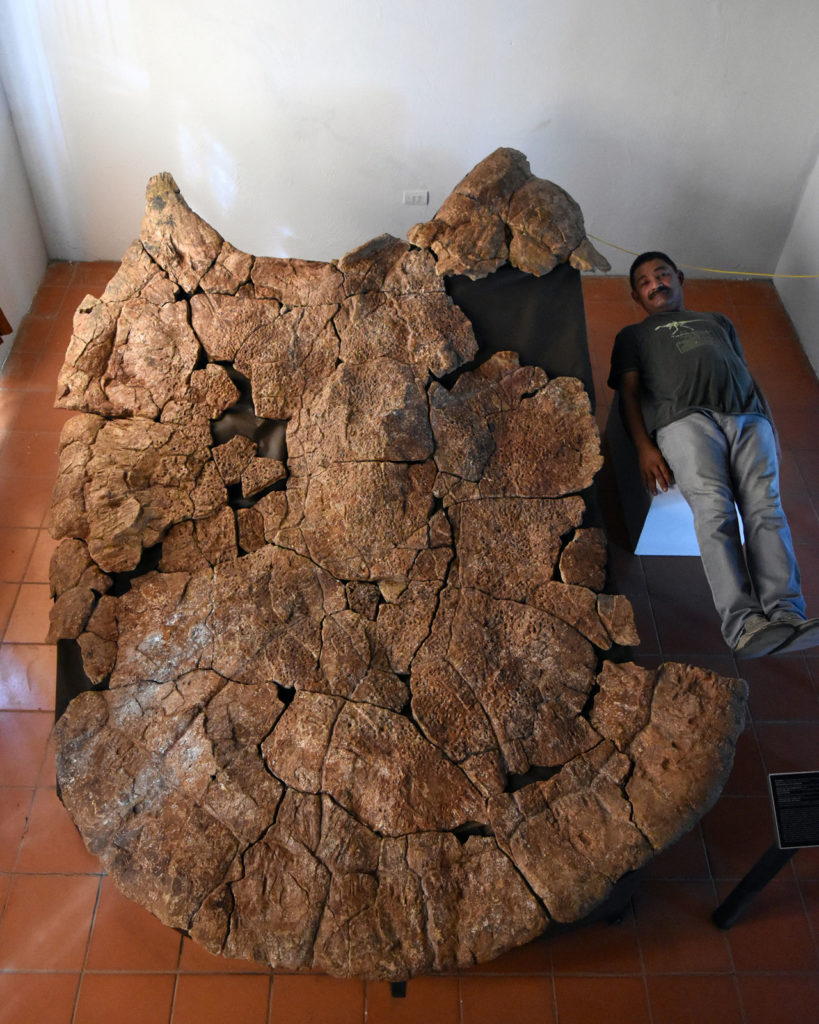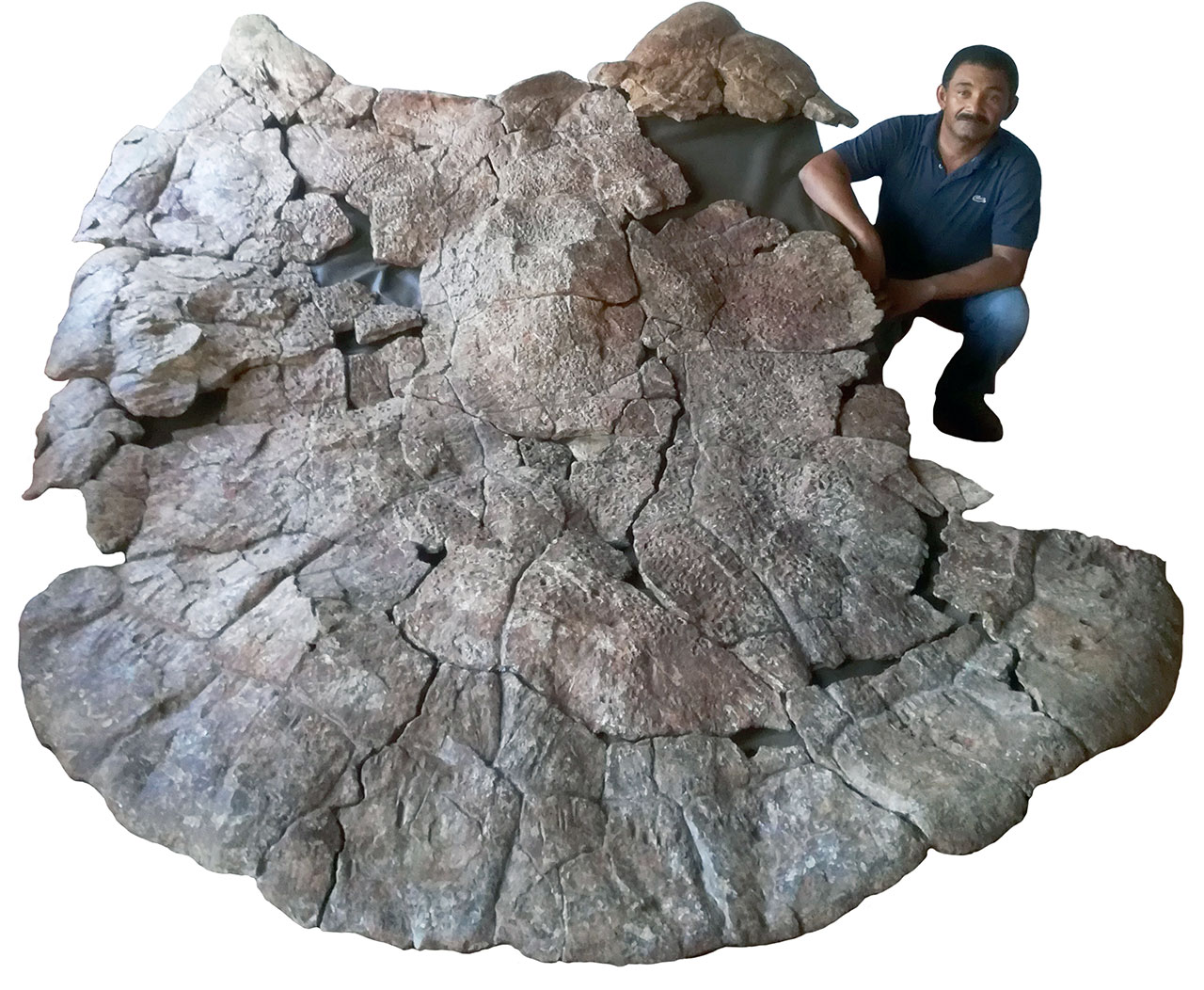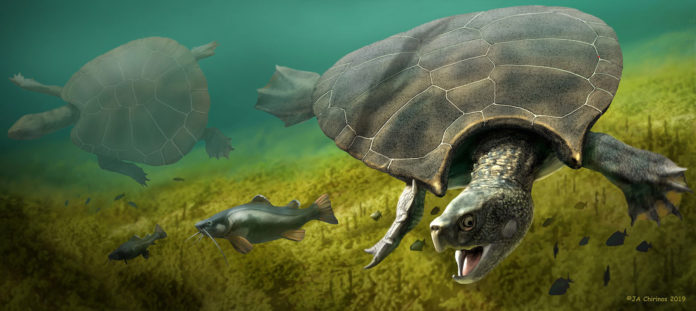Paleobiologists from the University of Zurich have discovered fossils of the most giant turtles that ever lived. Known as Stupendemys geographicus, the turtle measured between 2.4 to almost 3 meters- the largest ever known.
Scientists discovered the fossil of an extinct turtle in Colombia’s Tatacoa Desert and Venezuela’s Urumaco region. The turtle had an estimated body mass of 1,145 kg—almost one hundred times that of its closest living relative, the big-headed Amazon river turtle.
Marcelo Sánchez, director of the Paleontological Institute and Museum of UZH and head of the study, said, “In some individuals, the complete carapace showed a peculiar and unexpected feature: horns. The two shell types indicate that two sexes of Stupendemys existed—males with horned shells and females with hornless shells.”

“This is the first time that sexual dimorphism in the form of horned shells has been reported for any of the side-necked turtles, one of the two major groups of turtles worldwide.”
“Despite its tremendous size, the turtle had natural enemies. In many areas, the occurrence of Stupendemys coincides with Purussaurus, the largest caimans. This was most likely a predator of the giant turtle, given not only its size and dietary preferences but also as inferred by bite marks and punctured bones in fossil carapaces of Stupendemys.”
Scientists also discovered jaws and other skeleton parts of Stupendemys. Thus, they were able to thoroughly revise the evolutionary relationships of this species within the turtle tree of life.

Sánchez said, “Based on studies of the turtle anatomy, we now know that some living turtles from the Amazon region are the closest living relatives. Furthermore, the discoveries and the investigation of existing fossils from Brazil, Colombia, and Venezuela indicate a much wider geographic distribution of Stupendemys than previously assumed.”
The study is published in the journal Science Advances.
